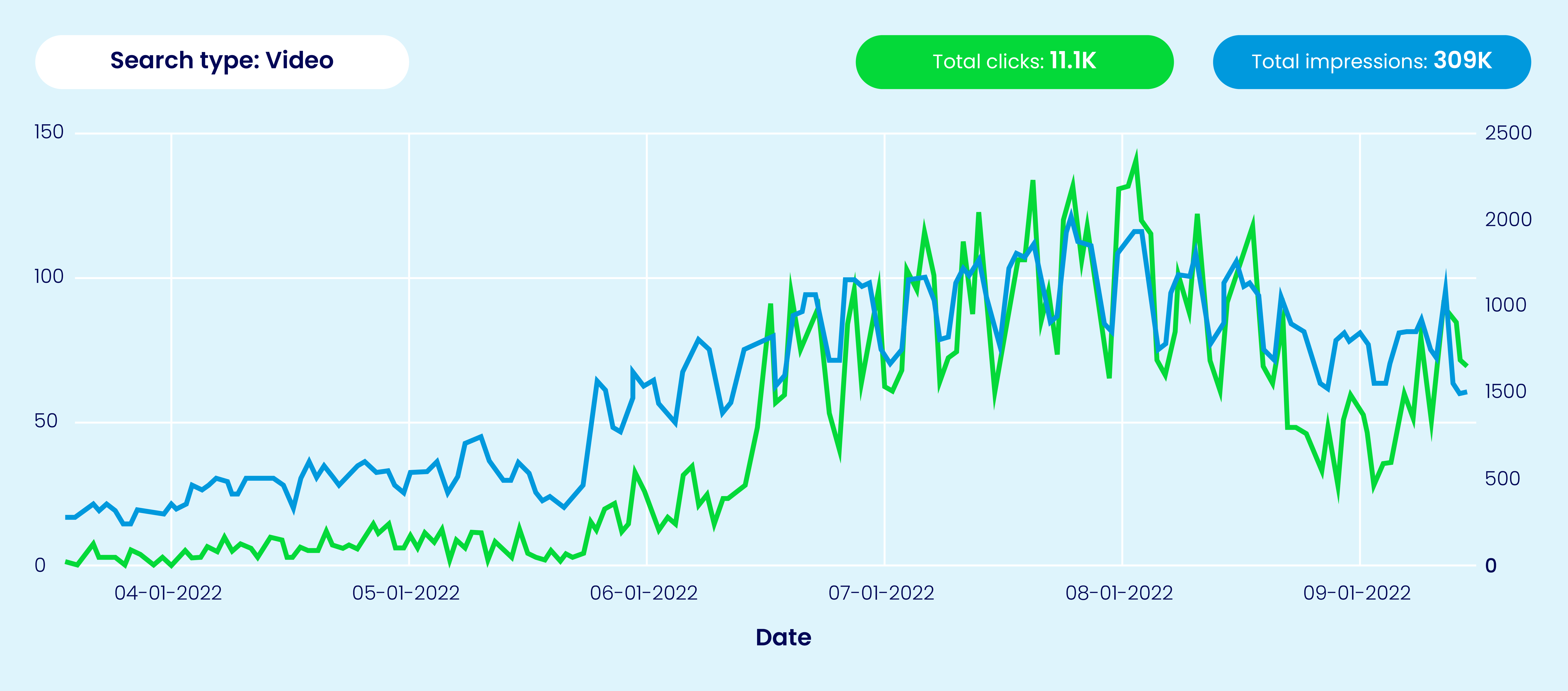Getting Started With a Video SEO Strategy: An Actionable Guide
This article was originally published in TechCrunch
December 19, 2022
By now, we all know that "Content is King" when it comes to SEO However, the winning SEO strategy of today demands more than just good content in the textual sense. Good content should also include video. A video SEO strategy is no longer optional to driving growth—it’s absolutely necessary.
So what’s an SEO strategist to do? And how do you nail down a comprehensive super strategy that will impress your boss and get results beyond your client’s expectations?
People Are Consuming Content More Than Ever
Let’s get basic for a second. Well, not quite… but stay with me here. We all know that digital consumption is happening at an ever-quickening rate. More than ever, people have more access to more information—which leads to an inundation of content. And—because content is plentiful—people don’t take that long to decide whether your content is worthy of their time.
One of the fastest ways to get people to notice your content is through video. In fact, the human brain processes images tens of thousands of times faster than text. And, viewers retain 95% of a message when they watch it on a video compared to 10% when reading it in a text.
What’s more, studies have shown that video consumption is not just for entertainment and amusing pet videos:
84% of people say that they’ve been convinced to buy a product or service by watching a brand’s video. Not only is it effective as a marketing tool, it drives traffic and leads:
86% of video marketers say video has increased traffic to their website.
The primary source of that additional traffic is, of course, Google search.
Getting a sustained jump in web traffic is every SEO strategist’s dream, and video is no-brainer way to do it. Take a look at what happened when we placed high quality, relevant videos on a client’s website:

Clicks and Impressions from Google Video Search for a site with Video and Video Schema.
Why Is Video Good for SEO?
These days, SEO is so much more than matching search queries to keywords on a page. Google aims to deliver content that best satisfies the user’s needs and considers the entire user experience. Google’s search quality evaluator guidelines places importance on the following when determining the quality of a website:
- The Purpose of a Page
- E-A-T (Expertise, Authoritativeness, Trustworthiness)
- Main Content
Considering these points is essential to creating a good user experience with good content
How to Implement a Video SEO Strategy
The right video SEO strategy for you will be largely determined by the type of content you currently create for your user base. It’s worth the time to perform a content audit and determine the type of content you have which could be the basis for your video content strategy. This is also a great way to identify where you might have any gaps in your current strategy. Video can help fill that gap as well.
Watch out: A common mistake when implementing video SEO is creating a video that isn’t in line with your strategy at all—instead, the video becomes something you do simply because you think you should. Make sure that, whatever your growth goals, the video(s) you create are a part of the greater strategy, and not in their own orbit.
Different types of videos include:
- Instructional
- Demonstration
- Case Study
- Webinar
- Testimonial
- Product announcements
If you already have existing videos, great—you’re ahead of the game. Now… are you optimizing them? If not, you should (more on that later). Once you have videos, deciding where to host them should be your next consideration.
Self-hosting vs Third-party Hosting
YouTube is clearly the platform that most sites use to host their video content. It is easy and free to upload videos and embed them on your webpage. Simply follow Google's straightforward instructions.
When your video shows up in the standard search, users may land on YouTube and not your website. This is a frequent critique of using Google vs. self-hosting. It’s great for branding, but not so great for getting users to interact with your website and ultimately convert.
- Self-hosting options: Wistia and Brightcove present two popular options for self-hosting. However, these can be expensive. Wistia starts at $100 a month. If you have a business focused on driving people to your website, specifically to make a purchase or take some other high-value conversion action, this may be your best option.
- YouTube is an easy and inexpensive way to get started, even if you eventually plan on a self-hosting option. Get started on YouTube, analyze your traffic, and extrapolate the additional potential revenue via self-hosting.
How to Optimize Your Website for Video
Sorry, folks—just slapping those videos on your current site won’t cut it. Here’s your checklist for everything you need to do before you upload:
- Do your keyword research. Much like traditional on-page SEO strategies, video optimizations starts with keyword research. Use that research to create a title that both has a high volume of search traffic, is interesting to users, and (of course) is relevant to your video.
- Create a short but relevant, keyword-rich description. The max size is around 5000 characters, but the first few sentences are the most important. 300 words is a good target. Repeat the main keywords 1–2 times (don’t keyword stuff). The first couple of sentences is what will show up in the Search Result. You want those sentences to compel the user to click!
- Consider your website URL. Don’t forget to include your website URLs close to the top of the description. If you want to get people to click on that link (and you do), it should be highly visible.
- Thumbnails. A compelling thumbnail is critical. It should communicate what the video is about as well as entice the user to click. This will improve CTR. Follow Google’s guidelines.
- Youtube Tags. Google’s recommendation for tags is to use them to catch common misspellings. Otherwise, they do not play a significant role in the algorithm.
- Page Optimizations. The website page you place the video on should, of course, be very relevant to the video. It should also follow your standard optimization rules of keyword usage and content optimization.
- Schemas. Schemas on your landing pages are information about a webpage that helps Google understand what a webpage is about. This is where you will include the video title, description, URL of the video, and URL of the thumbnail. The full schema definition can be found over here. Optional, but recommended attributes include:
- Clip. This lets you find specific, key moments in the video, and it makes your video more valuable to users as they can jump to the part they are interested in. Google also highly prioritizes clips in search.
- Transcript. Adding the transcript to the schema is an opportunity to communicate the video content to Google clearly. While Google does not explicitly index the transcript content, like all schemas, it can help Google understand the page and ultimately improve rankings.
The Takeaway
Content is being consumed at a faster rate than ever. Users—and Google—expect more than just finding a keyword: they want an experience. Implementing the right video SEO strategy can help you deliver the right content to your user base, improve your visibility in Google, and ultimately drive growth.
Contact Nuvolum to Talk to A Specialist
Nuvolum goes beyond better marketing. We breathe life into your brand and create sustainable, measurable growth. Request a marketing analysis to discover how Nuvolum takes you where you want to go.
Marketing Strategy
Optimized Websites
Full-Service Agency



